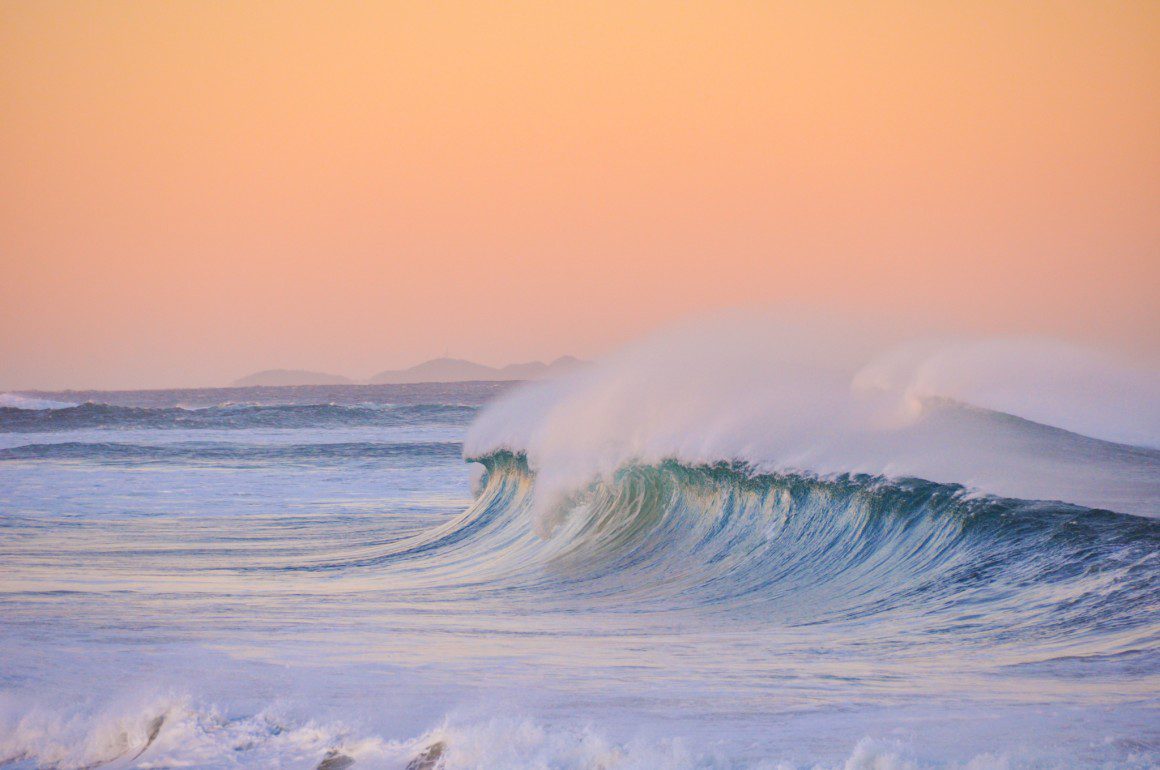
As we near the end of the year, for many of us, our thoughts are turning to the prospect of a long and relaxing summer holiday, soaking up the joys of sun, sand and salt water. About one third of Australians look forward to a long summer holiday at the beach and as many as 45% make day trips to the beach each summer (Tourism and Transport Form 2018). Australia has the largest number of beaches of any country and arguably a coastal culture that extends back over 60,000 years. Today about 80% of the population of NSW lives within 50km of the coast.
This summer, the Bureau of Meteorology (BoM) has confirmed what many have already experienced first-hand, with drizzly or rainy days, high humidity, frequent on-shore winds and above average ocean swell – we are in a la nina summer.
La nina and el nino (along with a transitional ‘neutral’ phase) are the two components of the ‘el nino Southern Oscillation’ (ENSO), which is one of the key mid-term drivers of climate variability in Australia. The BoM says that during la nina, trade winds strengthen and waters north of Australia increase in temperature. This brings cloudiness and rainfall in the north, a wetter start to the northern wet season and heavy spring rainfall in the east. Tropical cyclones are more likely to occur in la nina years and to start earlier. The six wettest spring periods on record for Australia were all la nina years and 8 of the 10 wettest summers were also la nina years, many also bringing floods. La nina years tend to stay warm and humid, but have fewer extreme heat days than el nino years.
During el nino, trade winds weaken, and warm water builds up in the central Pacific. This suppresses cloud and rainfall in northern Australia, leads to below average winter and spring rain in the east and south and a dry start to the northern wet season. El nino conditions are associated with drought.
What does La nina mean for our coast? If your favourite surfing spot is best with a southerly or south easterly swell, you could be in for a treat, but for the rest of us, la nina conditions might dampen your summer holiday in more ways than you thought.
November 2021 was the wettest on record in NSW (i.e. since 1900), averaging 132mm of rain across the state. Our catchments are saturated and many are already in flood. The cloudy conditions mean that temperatures are also subdued.
All that rain means water quality is impacted in our estuaries and nearby beaches. Estuary waters are discoloured and often muddy, visibility is poor, there may be bacterial contamination and there’s a lot of debris and litter washed into waterways from the stormwater system. As floodwater subsides off coastal floodplains, estuaries may also be impacted by high organic load, low dissolved oxygen events, black water and fish kills. High nutrient loads in estuaries and off the coast may encourage algal blooms – which may cause eye and skin irritations.
What can you do? It’s best to stay out of the water in estuaries for up to three days and on ocean beaches for a day or so after heavy rainfall, to allow flushing of polluted stormwater from natural waterways. We can all help to reduce litter pollution of our beaches and foreshores – by recycling or disposing of containers and packaging correctly and by helping to pick up stuff that ends up on our beaches, mangroves and saltmarsh. If you see dead fish in your estuary, contact the local DPI Fisheries office and let them know, so they can investigate.
Some beaches may be in an eroded state, after weeks of southerly swell. That means bars and rips might be in a different spot, so learn how to identify them and listen to directions from lifesavers. Keep an eye out for blue bottles on the beach – although actually they may be less common on NSW beaches in la nina conditions as they are most common in the sub tropics and tend to be blown on shore with strong north easterly winds.
For more ways to help look after our coast and stay safe, contact your local Coastcare or Landcare group, check water quality results from Beachwatch (in NSW), join a summer program run by your local council, or check out the Beachsafe app from Surf Life Saving Australia.
It might be wet, but there’s still a lot to enjoy.


